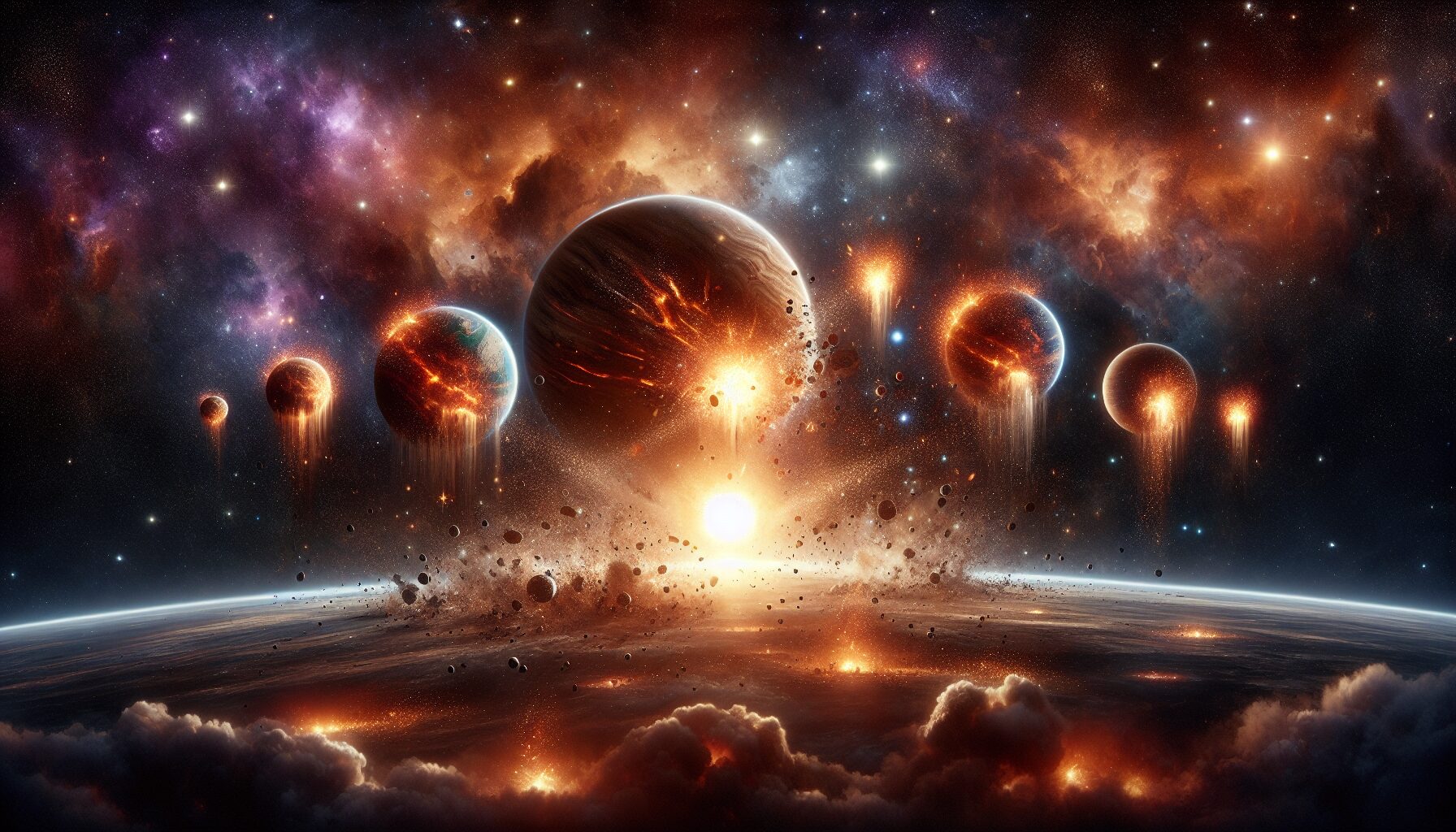The Death of Worlds: Planets Destroyed by Their Suns
In the vast and mysterious universe, the inevitable life cycle of stars can lead to catastrophic consequences for their orbiting planets. As stars age, they undergo transformative stages that can result in the destruction of nearby celestial bodies. This stellar evolution paints a dramatic picture of cosmic death, where planets meet their fiery end at the hands of their own suns.
The Life and Death of Stars
Stars like our Sun have a finite lifespan, measured in billions of years. Throughout their lives, stars burn hydrogen in a process known as nuclear fusion, which provides the light and heat essential for life on planets such as Earth. However, this process cannot last forever.
As stars exhaust their hydrogen fuel, they undergo a series of transformations. For instance, stars similar to the Sun become red giants. As they expand, their outer layers move closer to orbiting planets, sometimes engulfing them. Astrophysicist Dr. Alex Filippenko from the University of California notes, “When the Sun becomes a red giant, it will likely expand beyond Earth’s orbit, ending all life on our planet.”[1]
Case Study: Kepler-56
A striking real-world example is the star Kepler-56 and its planetary system. Kepler-56 is a red giant with two of its planets, Kepler-56b and Kepler-56c, predicted to be consumed by the star in a few million years. The expulsion of energy from the giant star’s core pushes it outward, leading to the gradual engulfment of these planets.[2]
The Cosmic Dance of Destruction
The destruction of planets is not limited to stars like our Sun. Some massive stars end their life cycles as supernovae, cataclysmic explosions that obliterate everything in close proximity. These supernovae release incredible amounts of energy, outshining entire galaxies and often leaving only a neutron star or black hole in their wake.
“The death of one star is the catastrophe of the worlds that lie within its grasp.”
Conclusion
The universe is a constantly changing stage where celestial bodies are both born and obliterated in cosmic cycles. The death of worlds, specifically planets destroyed by their suns, serves as a humbling reminder of our own planet’s eventual fate. While our Sun is not expected to reach red giant status for billions of years, observing these phenomena enriches our understanding of the universe’s dynamic nature—echoing the adage that change is the only constant.
For more information, check out the full articles on Universe Today and Space.com.
